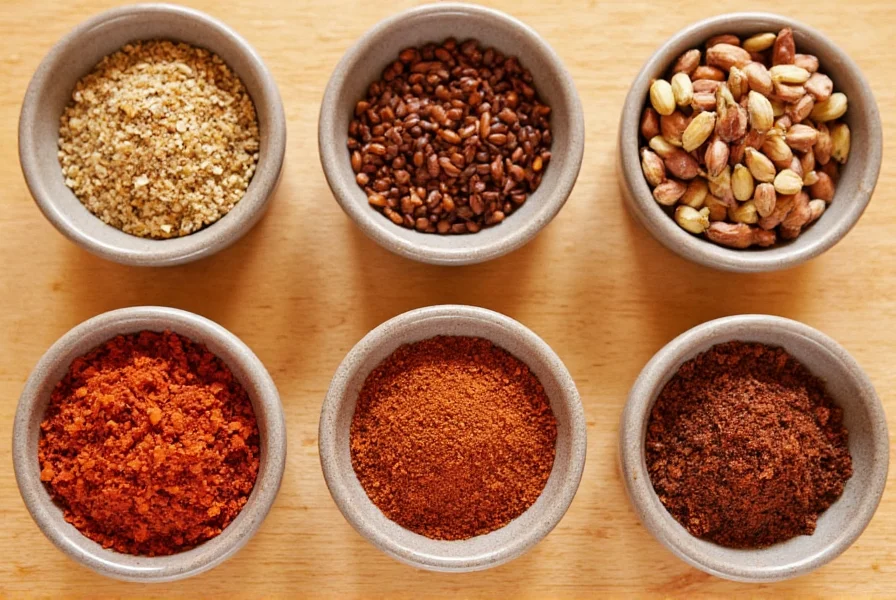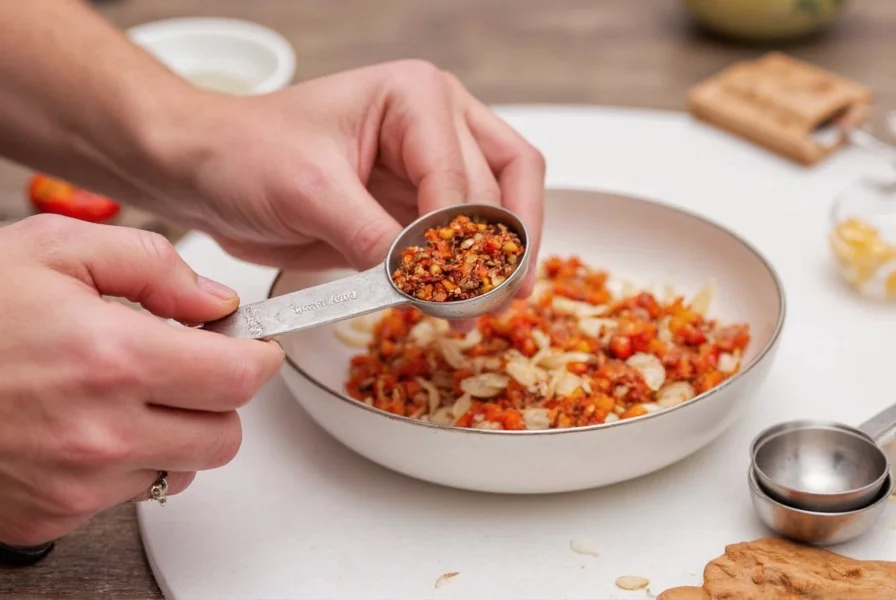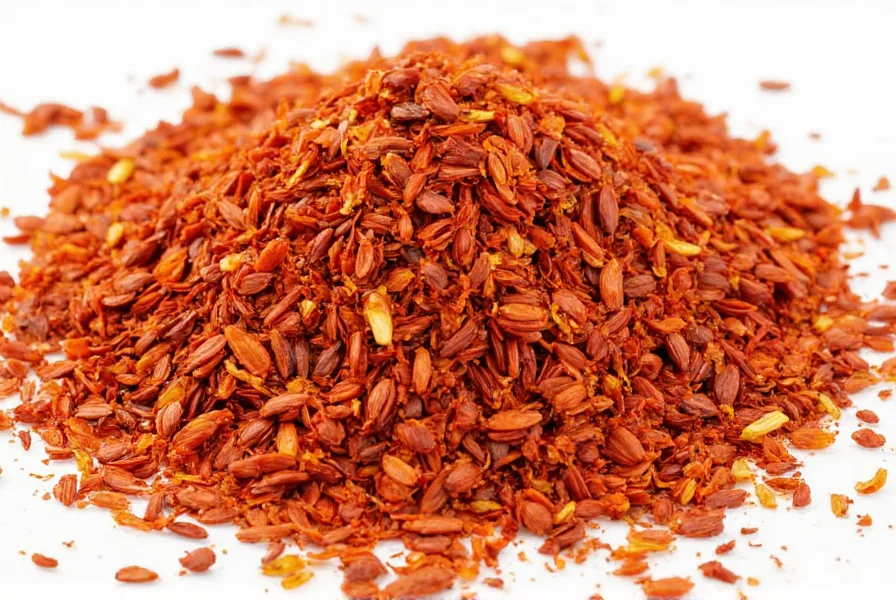The best chili flakes substitutes are crushed red pepper (1:1 ratio), cayenne pepper (use 1/4 to 1/2 amount), smoked paprika (1:1 for milder flavor), hot sauce (adjust to taste), or finely chopped fresh chili peppers. Each alternative offers different heat levels and flavor profiles that work in various recipes when you're out of chili flakes.
Running out of chili flakes mid-recipe doesn't have to ruin your cooking. Whether you're making pizza, pasta, or Asian cuisine, understanding effective chili pepper flakes replacement options ensures your dish maintains the desired heat and flavor profile. This guide provides practical solutions based on what's likely already in your pantry.
Understanding Chili Flakes and Their Role
Chili flakes, typically made from dried and crushed cayenne peppers, deliver moderate heat (30,000-50,000 Scoville units) with a slightly smoky, fruity flavor. They're essential in Italian, Mediterranean, and Asian cuisines for adding both heat and visual appeal. When seeking a chili crushed pepper substitute, consider both the heat level and flavor characteristics you need for your specific dish.
Top 5 Effective Chili Flakes Alternatives
1. Crushed Red Pepper
Often confused with chili flakes, crushed red pepper is actually the same product in most grocery stores. This makes it the perfect 1:1 substitute. Check your spice aisle—many "chili flakes" are simply labeled as "crushed red pepper flakes." This chili pepper substitute maintains identical heat levels and works in any recipe calling for chili flakes.
2. Cayenne Pepper
For recipes requiring intense heat, cayenne pepper powder serves as an excellent chili flakes replacement. Use only 1/4 to 1/2 teaspoon of cayenne for every teaspoon of chili flakes, as it's significantly hotter. This ground chili pepper substitute dissolves completely, making it ideal for sauces and marinades where visible flakes aren't necessary. Remember that cayenne lacks the subtle texture of flakes but delivers pure heat.
3. Smoked Paprika
When you need a milder alternative with depth, smoked paprika makes a versatile chili flakes substitute. Use a 1:1 ratio for recipes where you want flavor without intense heat. This alternative works particularly well in Spanish, Mexican, and barbecue dishes. For recipes requiring both heat and smoke, combine smoked paprika with a pinch of cayenne to create a balanced chili pepper flakes replacement.
4. Hot Sauce
Liquid alternatives like hot sauce provide adjustable heat for chili flakes replacement. Add 1/2 teaspoon of your favorite hot sauce (like Tabasco or Sriracha) per 1/4 teaspoon of chili flakes, adjusting to taste. This chili substitute works best in soups, stews, and sauces where liquid content won't affect the recipe. Remember that vinegar-based hot sauces will alter the dish's acidity, so choose accordingly.
5. Fresh Chili Peppers
Finely chopped fresh chilies like serrano, jalapeño, or Thai bird's eye peppers make excellent fresh chili flakes substitutes. Use 1 tablespoon of finely chopped fresh chili per 1/2 teaspoon of dried flakes. This alternative adds moisture to your dish, so reduce other liquids slightly. Fresh chilies provide vibrant flavor but lack the concentrated heat of dried flakes—adjust quantities based on the specific pepper's heat level.
| Substitute | Ratio to Chili Flakes | Heat Level | Best For |
|---|---|---|---|
| Crushed Red Pepper | 1:1 | Moderate (30k-50k SHU) | All-purpose replacement |
| Cayenne Pepper | 1/4-1/2 tsp per tsp | High (30k-50k SHU) | Sauces, marinades |
| Smoked Paprika | 1:1 | Mild (100-500 SHU) | Smoky dishes, rubs |
| Hot Sauce | 1/2 tsp per 1/4 tsp | Variable | Liquid-based recipes |
| Fresh Chilies | 1 tbsp per 1/2 tsp | Variable | Fresh applications |

Cuisine-Specific Substitution Tips
For Italian dishes like pizza or pasta, crushed red pepper provides the most authentic chili flakes replacement. In Asian cuisine, consider using gochugaru (Korean red pepper flakes) which offers similar heat with a distinctive flavor. When preparing Mexican dishes, ancho chili powder creates a suitable mild alternative with rich flavor.
Professional chefs often combine substitutes for complex flavor profiles. Try mixing smoked paprika with a pinch of cayenne for recipes requiring both heat and depth. This approach creates a more sophisticated chili pepper substitute that mimics the nuanced flavor of quality chili flakes.
Storage Considerations for Substitutes
Unlike chili flakes which maintain potency for 1-2 years, some substitutes have shorter shelf lives. Ground spices like cayenne and paprika lose potency faster—replace within 6 months for best results. Fresh chili peppers should be used within a week, while hot sauces typically last 6-12 months after opening. Store all substitutes in airtight containers away from light and heat to preserve their flavor and heat characteristics.

Avoiding Common Substitution Mistakes
Many home cooks make critical errors when substituting chili flakes. Adding too much cayenne pepper is the most frequent mistake—always start with less and adjust gradually. Another common error involves using sweet paprika instead of smoked paprika, resulting in missing flavor dimensions. When using fresh chilies as a substitute, failing to remove seeds properly leads to inconsistent heat levels.
Remember that different chili varieties have dramatically different heat levels. A single Thai bird's eye chili contains significantly more heat than a jalapeño. When using fresh chilies as a chili flakes replacement, always taste a small piece first to gauge heat intensity before adding to your recipe.
Frequently Asked Questions
Can I use black pepper instead of chili flakes?
Black pepper won't provide the same heat profile as chili flakes. While it adds pungency, it lacks capsaicin that creates chili heat. For dishes requiring noticeable heat, choose one of the recommended chili pepper substitutes instead.
How do I adjust recipes when substituting cayenne for chili flakes?
Use only 1/4 to 1/2 teaspoon of cayenne pepper for every teaspoon of chili flakes. Cayenne delivers more concentrated heat since it contains no seeds or membrane. Always add gradually and taste as you go to prevent over-spicing.
What's the difference between chili powder and chili flakes?
Chili powder typically contains a blend of ground chilies plus other spices like cumin and garlic powder, while chili flakes are pure crushed dried chilies. For direct substitution, use 3/4 teaspoon chili powder per 1/2 teaspoon chili flakes, adjusting for additional flavors in the powder.











 浙公网安备
33010002000092号
浙公网安备
33010002000092号 浙B2-20120091-4
浙B2-20120091-4